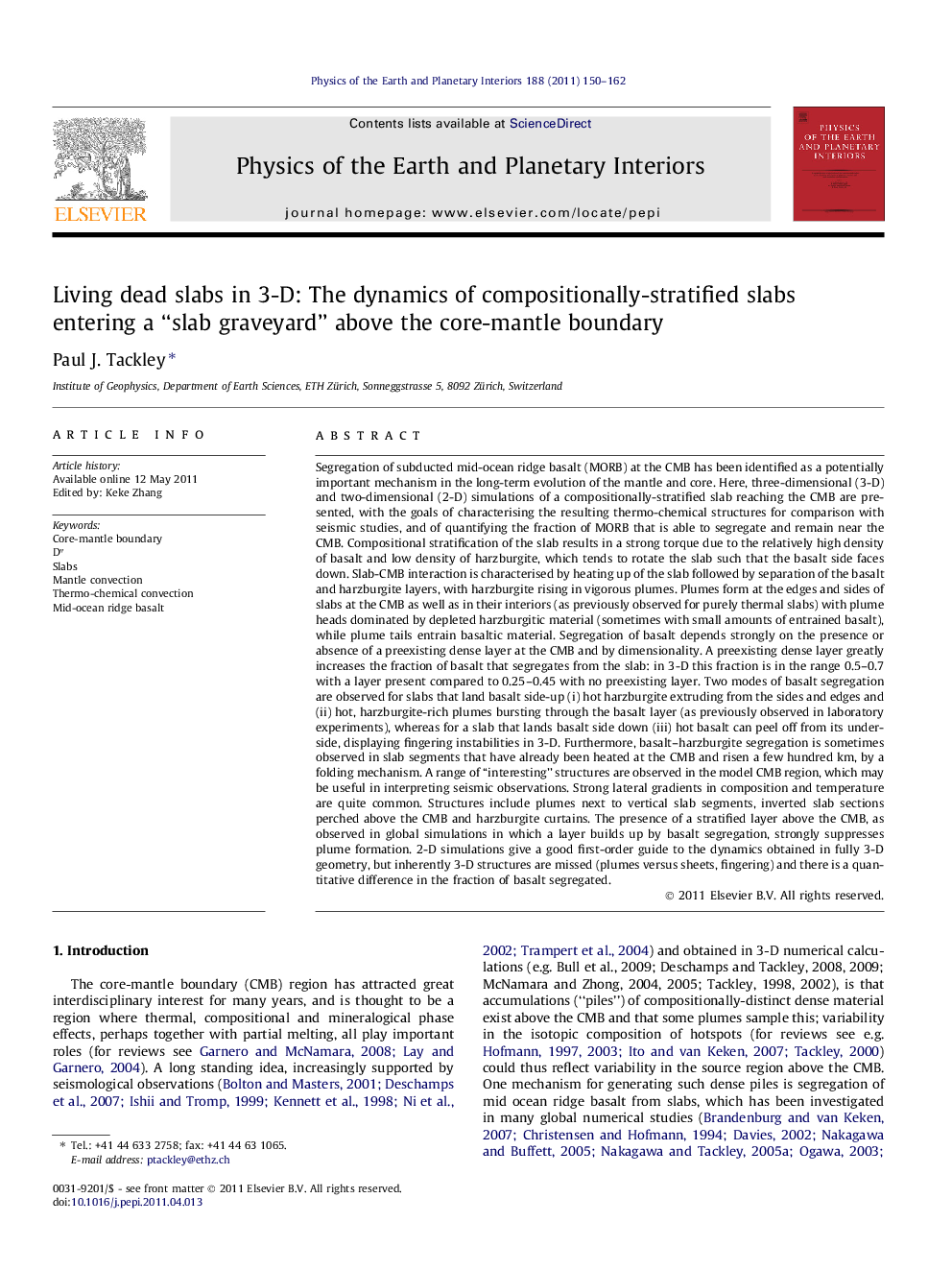| Article ID | Journal | Published Year | Pages | File Type |
|---|---|---|---|---|
| 4741900 | Physics of the Earth and Planetary Interiors | 2011 | 13 Pages |
Segregation of subducted mid-ocean ridge basalt (MORB) at the CMB has been identified as a potentially important mechanism in the long-term evolution of the mantle and core. Here, three-dimensional (3-D) and two-dimensional (2-D) simulations of a compositionally-stratified slab reaching the CMB are presented, with the goals of characterising the resulting thermo-chemical structures for comparison with seismic studies, and of quantifying the fraction of MORB that is able to segregate and remain near the CMB. Compositional stratification of the slab results in a strong torque due to the relatively high density of basalt and low density of harzburgite, which tends to rotate the slab such that the basalt side faces down. Slab-CMB interaction is characterised by heating up of the slab followed by separation of the basalt and harzburgite layers, with harzburgite rising in vigorous plumes. Plumes form at the edges and sides of slabs at the CMB as well as in their interiors (as previously observed for purely thermal slabs) with plume heads dominated by depleted harzburgitic material (sometimes with small amounts of entrained basalt), while plume tails entrain basaltic material. Segregation of basalt depends strongly on the presence or absence of a preexisting dense layer at the CMB and by dimensionality. A preexisting dense layer greatly increases the fraction of basalt that segregates from the slab: in 3-D this fraction is in the range 0.5–0.7 with a layer present compared to 0.25–0.45 with no preexisting layer. Two modes of basalt segregation are observed for slabs that land basalt side-up (i) hot harzburgite extruding from the sides and edges and (ii) hot, harzburgite-rich plumes bursting through the basalt layer (as previously observed in laboratory experiments), whereas for a slab that lands basalt side down (iii) hot basalt can peel off from its underside, displaying fingering instabilities in 3-D. Furthermore, basalt–harzburgite segregation is sometimes observed in slab segments that have already been heated at the CMB and risen a few hundred km, by a folding mechanism. A range of “interesting” structures are observed in the model CMB region, which may be useful in interpreting seismic observations. Strong lateral gradients in composition and temperature are quite common. Structures include plumes next to vertical slab segments, inverted slab sections perched above the CMB and harzburgite curtains. The presence of a stratified layer above the CMB, as observed in global simulations in which a layer builds up by basalt segregation, strongly suppresses plume formation. 2-D simulations give a good first-order guide to the dynamics obtained in fully 3-D geometry, but inherently 3-D structures are missed (plumes versus sheets, fingering) and there is a quantitative difference in the fraction of basalt segregated.
► Slabs tend to rotate to basalt-side down as they sink. ► Slab-CMB interaction is characterised by heating up of the slab followed by separation of the basalt and harzburgite layers. ► Basalt–harzburgite segregation occurs in several different modes depending on the orientation and angle of the slab. ► A preexisting dense layer greatly increases the fraction of basalt that segregates from the slab; dimensionality also matters. ► Plumes form at the edges, sides and interiors of slabs, with depleted plume heads and basalt-entraining plume tails.
